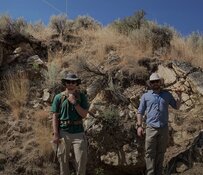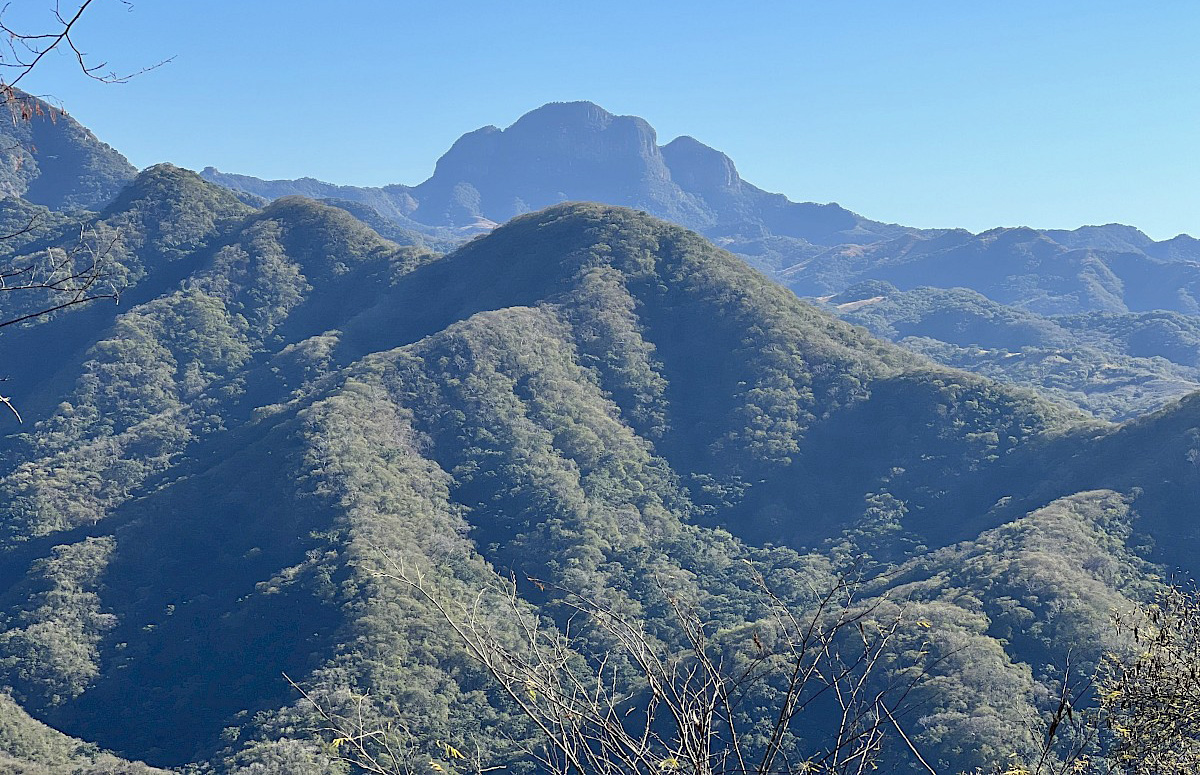The Gold Report: Michael, in August you said $2,000/ounce (oz) gold would push up equity prices in 2013. Are you still of that mindset?
Michael Fowler: Yes, although it has taken longer than I expected. The U.S. dollar price of gold was up 6.2% in 2012, but the real increases in the gold price took place in other currencies. For example, in 2012 gold was up about 15% in the euro. The strengthening U.S. economy has been a headwind to gold. I remain bullish on gold and am keeping my $2,000/oz average for 2013.
TGR: A $1,675/oz gold price would require an increase of almost 20% to reach $2,000/oz. Will it require a downturn in the U.S. economy to accomplish that?
MF: To some degree, I hope the U.S. economy will not speed up because that would be a major risk to my analysis. The U.S. economy is relatively lackluster. We think the Fed will continue with quantitative easing and increasing the money supply. Interest rates will continue to be low. All of that creates a very positive environment for gold.
"I expect more quantitative easing around the world will cause gold to rise."
The risk factor here is that if the U.S. economy does speed up and outperforms expectations, it will create a renewed headwind for gold. However, that is not my scenario right now. I think the U.S. economy will move along at 1–2% growth rate per annum, basically static.
I expect more quantitative easing around the world will cause gold to rise. Japan, for example, is intent on devaluing its currency. In Washington, D.C., the recurring debt ceiling debate may be a potential flashpoint. Potential downgrades by the rating agencies and the Federal Reserve continuing to buy up bonds are other factors.
TGR: Tom Albanese, CEO of Rio Tinto Plc (RIO:NYSE; RIO:ASX; RIO:LSE; RTPPF:OTCPK), was sacked in mid-January due to a $14 billion (B) write-down on assets, mostly owing to overpaying and takeovers. Similar firings have happened in the gold space. Do these dismissals signal a changing mindset toward merger and acquisition (M&A) activity among the largest players?
MF: Yes, I think so. I am not predicting numerous M&As, although I would suggest that this is a good time to acquire.
The CEOs you mentioned made acquisitions at the top of the market. Major strategic mergers are, in my opinion, value destructing. I do not think we will see another Rio Tinto-Alcan merger or takeover in this environment.
I think we will see a lot of smaller transactions happen, such as what occurred with Alamos Gold Inc. (AGI:TSX) and Aurizon Mines Ltd. (ARZ:TSX; AZK:NYSE.MKT) M&A activity will be lower this year.
TGR: You cover Aurizon and know its assets well. What do you think of the Alamos offer; is it fair value?
MF: No, I do not think it is fair value. I also am surprised at the move by Alamos because there are no synergies here. Alamos' assets are in Mexico and Turkey. The company has nothing in Canada, so there are no synergies with Aurizon, whose mines and projects are in Québec.
"Major strategic mergers are, in my opinion, value destructing."
I think Aurizon would provide a better fit and more synergy with a company like Agnico-Eagle Mines Ltd. (AEM:TSX; AEM:NYSE) , IAMGOLD Corp. (IMG:TSX; IAG:NYSE) or even Osisko Mining Corp. (OSK:TSX).
As far as valuation, over the last three years Aurizon's stock has traded mostly over $4.65/share. Alamos' bid is too low. Alamos will have to bid over $5/share. Before the offer was made, my target price on Aurizon was $5.90/share.
Having said that, kudos to Alamos for picking a time when Aurizon is fairly weak in terms of its production in Q4/12, spilling over into Q1/13.
TGR: So Alamos has vastly underbid.
MF: Yes, it is a good premium, but not enough. I am pretty sure the Aurizon board will try to defend as much as it can.
TGR: Does Aurizon have a poison pill in its governance bylaws?
MF: Yes, it has just enacted one. I expect Aurizon will entertain white knights, such as Agnico-Eagle or IAMGOLD.
TGR: Alamos obviously sees value in the small-cap gold producer space. Is that where you see the most value among the gold equities?
MF: That is where we agree. Alamos picked Aurizon because it is producing good cash flow, has $200 million on the balance sheet and no debt. The junior midtier environment is the sweet spot for me.
TGR: Does that not come with a fair amount of risk?
MF: Yes, indeed. Aurizon, for example, has operational risk in its Casa Berardi mine, which is not an easy mine to work. Alamos—which is really a junior/midtier producer—has risk at its Mulatos mine in Mexico.
Having said that, the upside potential in these companies far exceeds that of a big company such as Barrick Gold Corp. (ABX:TSX; ABX:NYSE) or Newmont Mining Corp (NEM:NYSE), which do not have any growth potential.
The junior/midtier sector offers growth, and that is why you have a higher degree of risk. It is up to the analyst to assess the risk and the growth potential. This is where I see the major price increases coming.
TGR: Some experts in the gold space are floating the idea that some major gold producers may change their model to something closer to an exchange-traded fund (ETF): They would sell a portion of their produced gold and hold the remainder. What do you think of that as a business model?
MF: I have not heard that, but there is a precedent. At one time, Goldcorp Inc. (G:TSX; GG:NYSE) held a lot of gold on its balance sheet. As the gold price went up, so did the value of the company, essentially like an ETF.
"The negativity floating around now sets us up for a very good, positive environment going forward."
I like the idea of holding gold on the balance sheet because it shows that the company actually believes in its own commodity. However, I do not think the market would view a company like Barrick, for example, as an ETF.
These companies have to find a way to be more judicious with their capital and to focus more on return on investment rather than go down the ETF route. If they are not growing, they could increase their dividends to the 4% range. That would be of interest to investors.
Quite frankly, I am more interested in companies that grow their reserves and resources, their earnings and cash flow.
TGR: With gold equity prices slumping badly, have you had to adjust your price-to-ounces-in-the-ground valuations or make other changes to your model to reflect what is happening in the market?
MF: The valuations are all over the place and they are cyclical. In 2009, the value-per-ounce-in-the-ground values went for about $20/oz average. In 2010, they went to $90/oz and are now at about $40/oz. It looks as if the cycle now is one to two years, and we are on one of the lows.
But as an analyst you have to look at what that value might be in a one-to-two-year horizon. Therefore, I do not adjust my models for swings in sentiment. Although we are on a low valuation right now, good valuations are out there. We are using a range of $50–70/oz for target prices on small companies.
TGR: In a February 2011 research report you rated Clifton Star Resources Inc. (CFO:TSX.V; C3T:FSE) a spec buy at $11/share. Your target price is now $5.96/share. That is a dramatic shift in two years. Is that representative of how things have changed in 24 months?
MF: We had a feeling that Clifton Star's resource was going to be a lot bigger than it turned out to be. In 2009, Osisko Mining was involved and the thinking was that the deposit would resemble the Malartic deposit in Québec, a 10 million ounce plus (Moz) bulk-tonnage deposit. While Clifton Star has a very good deposit, it is more specific and focused, probably in the region of 4–5 Moz.
There also is some risk aversion built into the target price due in part to the global debt problems.
TGR: Clifton Star recently tabled a preliminary economic assessment (PEA) on its Duparquet deposit in Québec. It has an internal rate of return of 15.5%. Does that seem low to you?
MF: It is a good number. The PEA was done fairly conservatively. A lot of drilling backs up that data. A 15% after-tax return on something with a high degree of confidence, in a good jurisdiction like Québec, is a good number. I would say that anything above 10% in Québec is a good number.
TGR: Did anything in the PEA surprise you?
MF: Not really. The resource was close to 4 Moz gold and Clifton Star will recover only about 1.7 Moz, so there is a slight difference there. Some of the ounces included in the resource are in the town of Duparquet, under a golf course. Those were not included in the PEA, which in my mind is fairly conservative for a scoping study or a PEA.
TGR: Which other companies that you follow offer what might be considered unprecedented value per ounce in the ground right now?
MF: We just put a report out on St Andrew Goldfields Ltd. (SAS:TSX), a junior producer with mines in Ontario, Canada. Up until 2007, it had a terrible history, which it has now turned around. The company is producing free cash flow, has rising earnings and a good-looking future. It has good value because of its legacy and upside potential.
TGR: What is St Andrews' production?
MF: It is producing 95,000 oz, with total cash costs just a tad over $900/oz, including royalties.
TGR: That seems on the high side. What is St Andrews doing to control costs?
MF: There are two elements to those costs. One is high royalties. The company cannot do much about that.
The other element is the cost of operations, and it can do something about mining more efficiently. St Andrews is mining better and the costs are going down by increasing throughput in the Holt mine.
If you took away the royalties, St Andrews is probably mining close to the world average cash cost. You are right, it is a high-cost producer. But, along with the high costs, you get a very attractive share valuation. St Andrews is cheap.
TGR: When can investors expect St Andrews to increase production?
MF: We see increased production in 2014, when the Taylor deposit comes fully onstream.
TGR: Has management thought about buying out those royalties or will the company just have to live with that headache?
MF: Management may talk bravely about trying to buy them back, but I doubt Franco-Nevada Corp. (FNV:TSX; FNV:NYSE) will sell them.
TGR: And what is your target price on St Andrews?
MF: It is $1.06/share.
TGR: Can you give us another name that offers good value per-ounce-in-the-ground?
MF: Brigus Gold Corp. (BRD:NYSE.MKT; BRD:TSX) is in a turnaround situation. I would not be surprised to see Brigus and St Andrews combine in some way. They are right next door to each other and both are turning themselves around. A combination would be a good idea.
TGR: Brigus just quadrupled the resource on its Grey Fox property.
MF: Correct, and Grey Fox is right next door to St Andrews, which has been finding similar types of resources on its side of the border.
TGR: Having a resource that goes under a border can complicate things.
MF: Both companies have to mine it somehow. To mine it separately is a bit more difficult. If they mine it together, they can use economies of scale to greater advantage.
We have also reported on Moneta Porcupine Mines Inc. (ME:TSX.V), which also is right next door to St Andrews. The whole Timmins area is an intriguing consolidation play.
TGR: What other companies would you like to discuss?
MF: Northern Freegold Resources Ltd. (NFR:TSX.V; NFRGF:OTCQX) has a porphyry deposit in the Yukon, a large bulk-tonnage gold-copper deposit. There are two main deposits: the Revenue deposit and the Nucleus deposit, with a higher-grade core.
TGR: The resource is smaller, but the grade is higher, which is actually more important.
MF: Exactly. It is more economic, which is exciting.
Western Copper and Gold Corp.'s (WRN:TSX; WRN:NYSE.MKT) project is 70 kilometers from Northern Freegold's. I mention that because Western Copper recently released a very positive feasibility study. Its deposit is geologically similar to Northern Freegold's. Western Copper came out with more than $1B in net present value.
Northern Freegold has better logistics than Western Copper. In fact, Western Copper has to use and extend Northern Freegold's road to its property. Northern Freegold has greater access to a power line than Western Copper. I point that out because Western Copper's market price has gone from $0.60 to $1.60/share because of the feasibility report. Northern Freegold should not be forgotten.
TGR: The Nucleus deposit has a potentially higher grade starter pit of about 850,000 oz. Does that increase the odds that the deposit will be developed?
MF: Indeed. It usually takes a huge amount of capital to get these big bulk-tonnage deposits into production. If you have a starter pit, you can do a phased approach. You can put in less capital up front, get your money back and then expand your pit.
This is what Western Copper is facing. Its capital costs are about $2B. Northern Freegold should have to spend a lot less, and if management chooses a phased approach, the company will recoup its money a lot faster.
TGR: And, in its copper-gold deposit, Northern Freegold also has molybdenum and silver.
MF: Correct. Of the two deposits—which may actually be connected—the Nucleus deposit is gold-copper and the Revenue deposit is copper-gold-moly-silver.
TGR: What is your target price on Northern Freegold?
MF: It is $1.44/share as a Speculative Buy.
TGR: Do you have one other name?
MF: International Northair Mines Ltd. (INM:TSX.V) is a very interesting silver play in Mexico. This is an open-pit situation. The deposit is in the region of 70 Moz, although the company has not yet issued an NI 43-101 report. That is expected at the end of Q1/13. The stock is trading for $0.29/share and I am looking for $1/share on it.
Fortune Minerals Ltd. (FT:TSX) has two deposits: one is metallurgical coal, the other is a cobalt-bismuth-gold-copper deposit. Both have feasibility studies that, combined, show well over $5/share of value. The stock trades for $0.53/share. I have a target of $2.65/share on it. The catalyst here is that POSCO (PKX:NYSE), the big Korean steel company, is already a partner and the company is looking for other partners to build the mines.
TGR: Michael, can you give our readers a reason or two to stay positive about the gold market?
MF: All is not lost in the gold sector. First of all, the gold sector is cyclical. We have been on a down cycle for about 20 months. Although that has been pretty depressing, history shows us that 20 months is about as long as a typical down cycle lasts.
Second, institutions and money managers have been selling their gold juniors. Typically, when the institutions are long juniors, it is time to head for the hills or sell them and vice versa. They tend to be contrary indicators at extremes. Institutions are overly negative on juniors right now. So now I would not head for the hills. I would accumulate. Valuations are cheap. I expect the mid-junior/midtier producers to be the first to move, followed by some of the junior explorers.
Quite frankly, the negativity floating around now sets us up for a very good, positive environment going forward.
TGR: Michael, thank you for your time and your insights.
Michael Fowler, senior mining analyst with Loewen, Ondaatje, McCutcheon Ltd., has worked in the investment industry since 1987 as a base and precious metals mining analyst for numerous high-profile firms. His coverage list included the major North American gold mining companies. Prior to this, Fowler worked as a geophysicist involved in mineral exploration for 10 years. He was involved in the discovery of the high-grade Cigar Lake uranium mine in Northern Saskatchewan in the early 1980s. He holds a Master of Business Administration from Cranfield University, U.K., a Master of Science in mineral exploration from Leicester University, U.K. and a Bachelor of Science in geology with geophysics from Liverpool University, U.K. He is a Member of the Institution of Materials in the UK and is a Member of the Canadian Institute of Mining and Metallurgy.
Want to read more Gold Report interviews like this? Sign up for our free e-newsletter, and you'll learn when new articles have been published. To see a list of recent interviews with industry analysts and commentators, visit our Streetwise Interviews page.
DISCLOSURE:
1) Brian Sylvester of The Gold Report conducted this interview. He personally and/or his family own shares of the following companies mentioned in this interview: None.
2) The following companies mentioned in the interview are sponsors of The Gold Report: Aurizon Mines Ltd., Goldcorp Inc., Clifton Star Resources Inc., St Andrew Goldfields Ltd., Franco-Nevada Corp., Brigus Gold Corp. and Northern Freegold Resources Ltd. Streetwise Reports does not accept stock in exchange for services. Interviews are edited for clarity.
3) Michael Fowler: I personally and/or my family do not own shares of the companies mentioned in this interview. However, Loewen, Ondaatje, McCutcheon Limited may own shares in the companies mentioned. I personally and/or my family am not paid by the companies mentioned in this interview. I was not paid by Streetwise Reports for participating in this interview.

 A lackluster U.S. economy is creating a positive environment for gold, according to Michael Fowler, senior mining analyst with Loewen, Ondaatje, McCutcheon Ltd. By calculating ounces-in-the-ground values and assessing risk, Fowler has concluded that the junior/midtier sector offers the best growth potential. He expects to see companies of all sizes try to control costs instead of looking for mergers and acquisitions to add value. Read on in this
A lackluster U.S. economy is creating a positive environment for gold, according to Michael Fowler, senior mining analyst with Loewen, Ondaatje, McCutcheon Ltd. By calculating ounces-in-the-ground values and assessing risk, Fowler has concluded that the junior/midtier sector offers the best growth potential. He expects to see companies of all sizes try to control costs instead of looking for mergers and acquisitions to add value. Read on in this 

































